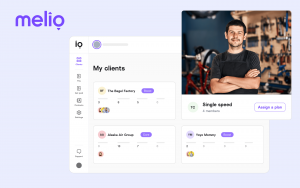Video Chat Summer Revival Inspired by Social, Mobile Tech
![]() Video chat is seeing a big boom again, with social networks and mobile technology driving new points of integration for established services. Skype, Google, Facebook and AOL are gaining new opportunities to extend video chat services in refreshing ways, with Facebook and Google’s latest video chat integrations marking a new era in social computing. Within two weeks of each other, Facebook and Google revealed video chat services, Facebook’s offering being powered by a Skype partnership. Google’s incorporated video chat into its new Google+ Circles, inspiring even our team at SiliconAngle to hold staff meetings with the new tool.
Video chat is seeing a big boom again, with social networks and mobile technology driving new points of integration for established services. Skype, Google, Facebook and AOL are gaining new opportunities to extend video chat services in refreshing ways, with Facebook and Google’s latest video chat integrations marking a new era in social computing. Within two weeks of each other, Facebook and Google revealed video chat services, Facebook’s offering being powered by a Skype partnership. Google’s incorporated video chat into its new Google+ Circles, inspiring even our team at SiliconAngle to hold staff meetings with the new tool.
Merely noting the differences between Facebook’s and Google’s approach to video calls is enough to draw out the challenges these services will have, and the benefits such diversity extends to users. Facebook’s looking to offer another option for communicating directly with another user, while Google+ supports up to 10 participants and is akin to a “hangout session.” Google+ centers around Circles, which are established groups of friends, creating a point of initiation for any communication that occurs within those groups. There’s a higher chance that a video call initiation will result in “accidental exposure” because of this set-up, though Facebook’s implementation of Skype is far less likely to do so. Granted, Skype’s Facebook tool is relatively stripped down in comparison to the full desktop version. But updates are planned, including support for group chat. What’s important for both, however, is access to users and ease of use for the technology provided.
For companies like AOL, video chat is certainly worth another look. We all remember AIM, and many of us still use it. As AOL continues with its company overhaul, things like video chat receive another chance to innovate.
“Clearly many industry leaders are converging on the power of face-to-face video but their implementations are very different,” says Jason shellen, head of the AIM division at AOL. “To some, video is yet another tool within their growing Swiss Army knife. We at AIM/AOL are focused above all on finding the fastest, simplest way to have a quick conversation without the barrier of usernames or accounts.
“Our intended audience is anyone who needs a simple, quick way to have a fast, fun video chat. Some of the solutions offered require unknown-third party plug-in’s while we rely on the well tested Flash in-use by Youtube and others. We believe that as we continue to refine AV past our beta period that it will prove to remain the simplest way to video chat anywhere – without having to log into any service at all.”
![]() But this extended social access, especially through a network as large as Facebook, has its downsides. Cyber-attackers are targeting video chat users for malware attacks, using the new service as bait. For Facebook users, it’s important to know that the new Skype integration isn’t a separate app, and does not require additional downloads. The Sophos NakedSecurity blog cautions, “If you see a wall post referencing ‘Enable video calls,’ don’t click it! Send your friend a message that they have been tricked.”
But this extended social access, especially through a network as large as Facebook, has its downsides. Cyber-attackers are targeting video chat users for malware attacks, using the new service as bait. For Facebook users, it’s important to know that the new Skype integration isn’t a separate app, and does not require additional downloads. The Sophos NakedSecurity blog cautions, “If you see a wall post referencing ‘Enable video calls,’ don’t click it! Send your friend a message that they have been tricked.”
It seems everyone is getting a little innovative with video chat, from Google to cyber-criminals. But what about mobile devices like tablets? Chat providers like Skype and Fring do in fact have mobile apps, but are missing the direct social network integration. But this is a necessary outlet to explore.
As the mobile industry stablizes standards around hardware, software support and operating systems, video chat is an important consideration even from the manufacturer’s standpoint. Apple, HP, Samsung and even RIM are exploring ways to integrate video chat into their tablets, though we have yet to hold Google+ Huddles or Facebook-Skype chat on any of these devices. It’s another frontier begging video chat innovation at the social level, and it’s a natural fit. I’m sure we’ll see developments in this space before you know it.
A message from John Furrier, co-founder of SiliconANGLE:
Your vote of support is important to us and it helps us keep the content FREE.
One click below supports our mission to provide free, deep, and relevant content.
Join our community on YouTube
Join the community that includes more than 15,000 #CubeAlumni experts, including Amazon.com CEO Andy Jassy, Dell Technologies founder and CEO Michael Dell, Intel CEO Pat Gelsinger, and many more luminaries and experts.
THANK YOU



















